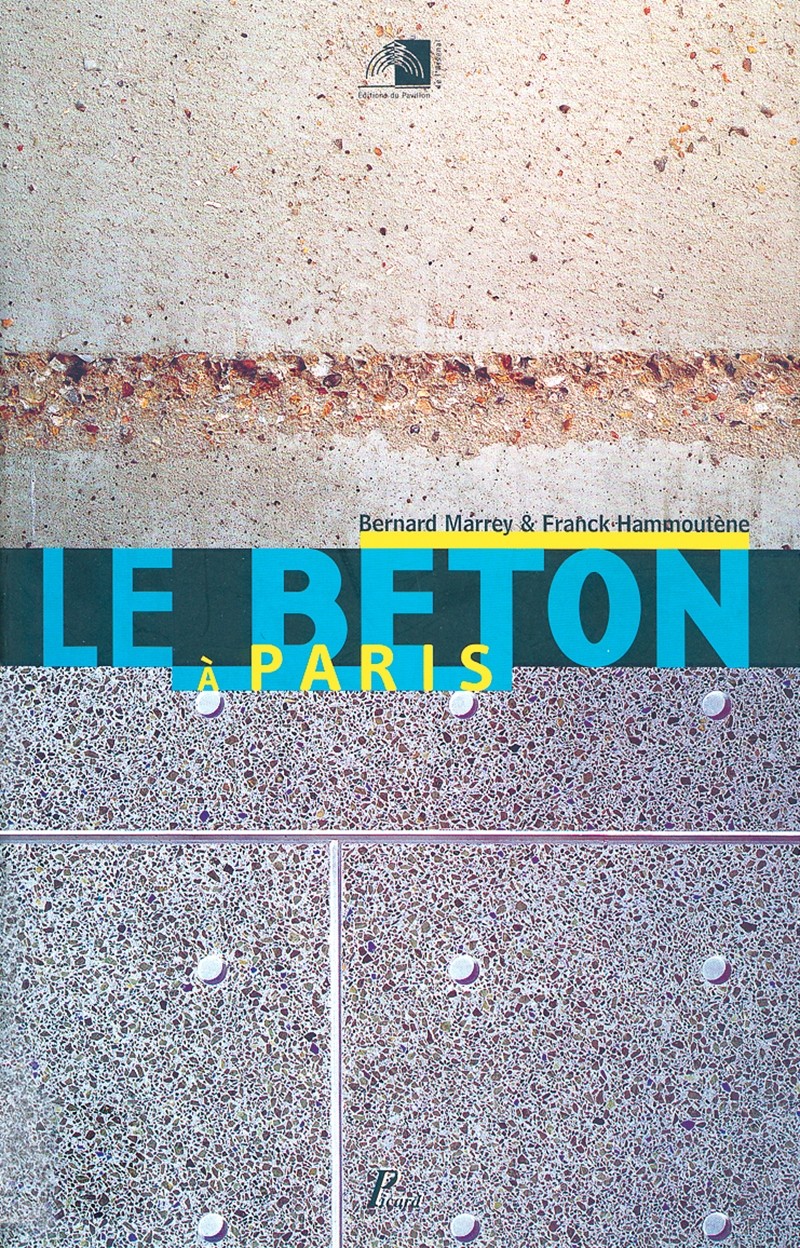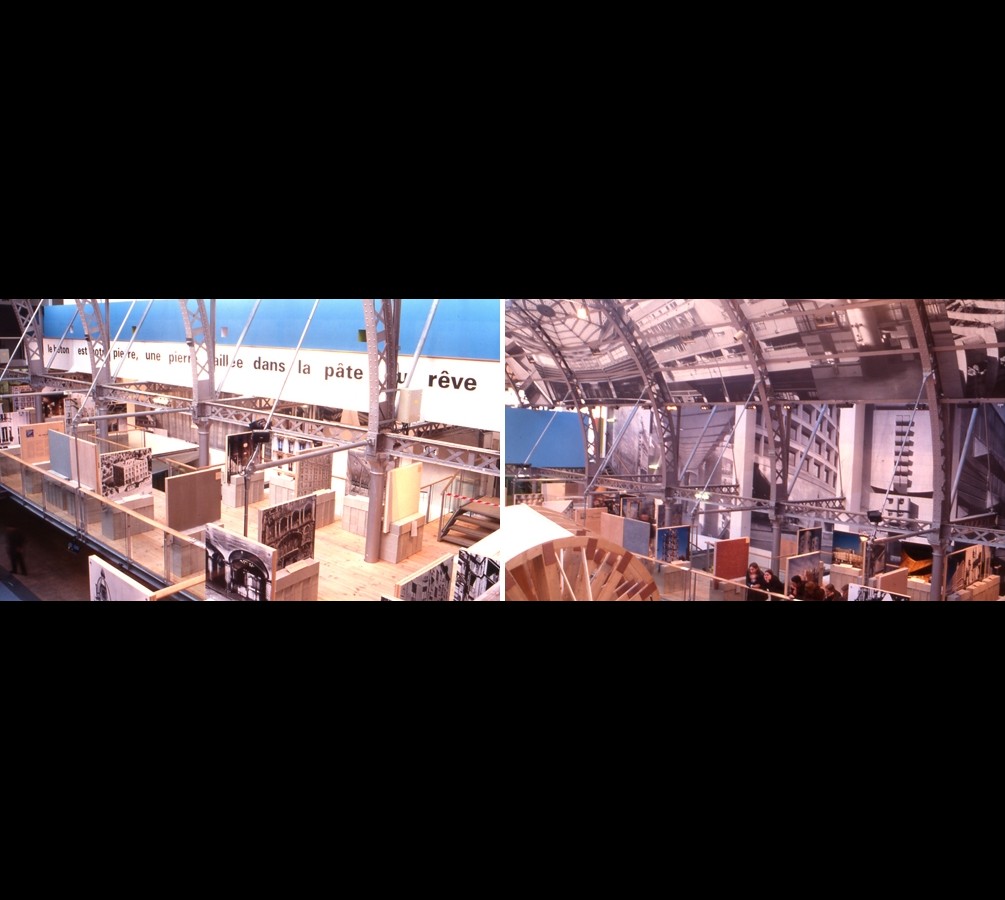After iron, brick, wood and glass, came for the last member of the family of materials at the Pavillon de l'Arsenal.
Compared to the others, which date back several centuries, if not millennia, reinforced concrete is only a hundred years old and its little brother, prestressed concrete, is a frisky fifty-year-old.
Furthermore, unlike its competitors, it is more of a technology than a material. Its resistance and look depend as much on the proportioning of its composition (clay, lime, water, sand, gravel) than on the way in which the ""mayonnaise is whipped up"": from a rather thick liquid, it becomes solid, even very solid, while retaining its plasticity. It is a material that is open to every possibility and every shape.
It was the key to the revolution in modern architecture during the 1920s, freeing the layout of rooms from the constraint of load-bearing walls, straight walls, or blank or nearly blank walls, allowing instead mainly glass faÁades and rounded, lop-sided spaces that were not necessarily layered.
The Depression in the 1930s forced housing builders to cut costs drastically and therefore to mass-produce. Given the ability of concrete to take on any shape, it was the ideal material for buildings molded ""on the assembly line"", if not ""by crane"", during the 1950s and 1960s.
The lack of money and the desire to build quickly at a time when needs were enormous, together with lack of imagination, have given concrete a bad name. Builders become aware of this: cement-makers developed new compositions, companies took greater care with texture, and architects showed more imagination in giving it shape.
The concrete of the century's end is the polished concrete of Pei that meets up with the stone of the Louvre or in the walls of Charles V, without attempting to imitate it or replace it. As a facade of untreated concrete, it is landmark indicating what was once a neighborhood of Paris.
Concrete, the material that lends itself to every shape, is indispensable to building and often hidden; it is synonymous with innovation and, above all, with the future. It lies in the field of every possibility and it is up to architects, engineers, contracting authorities and manufacturers to a make concrete the material of the next millennium. It offers a revolutionary virtue for the future: the power to help architecture to evolve.
Furthermore, unlike its competitors, it is more of a technology than a material. Its resistance and look depend as much on the proportioning of its composition (clay, lime, water, sand, gravel) than on the way in which the ""mayonnaise is whipped up"": from a rather thick liquid, it becomes solid, even very solid, while retaining its plasticity. It is a material that is open to every possibility and every shape.
It was the key to the revolution in modern architecture during the 1920s, freeing the layout of rooms from the constraint of load-bearing walls, straight walls, or blank or nearly blank walls, allowing instead mainly glass faÁades and rounded, lop-sided spaces that were not necessarily layered.
The Depression in the 1930s forced housing builders to cut costs drastically and therefore to mass-produce. Given the ability of concrete to take on any shape, it was the ideal material for buildings molded ""on the assembly line"", if not ""by crane"", during the 1950s and 1960s.
The lack of money and the desire to build quickly at a time when needs were enormous, together with lack of imagination, have given concrete a bad name. Builders become aware of this: cement-makers developed new compositions, companies took greater care with texture, and architects showed more imagination in giving it shape.
The concrete of the century's end is the polished concrete of Pei that meets up with the stone of the Louvre or in the walls of Charles V, without attempting to imitate it or replace it. As a facade of untreated concrete, it is landmark indicating what was once a neighborhood of Paris.
Concrete, the material that lends itself to every shape, is indispensable to building and often hidden; it is synonymous with innovation and, above all, with the future. It lies in the field of every possibility and it is up to architects, engineers, contracting authorities and manufacturers to a make concrete the material of the next millennium. It offers a revolutionary virtue for the future: the power to help architecture to evolve.






